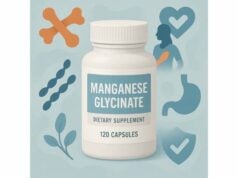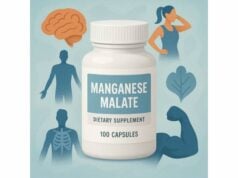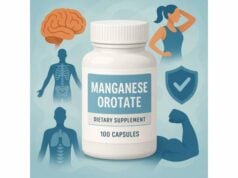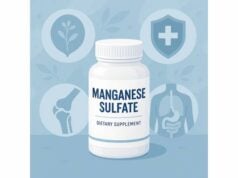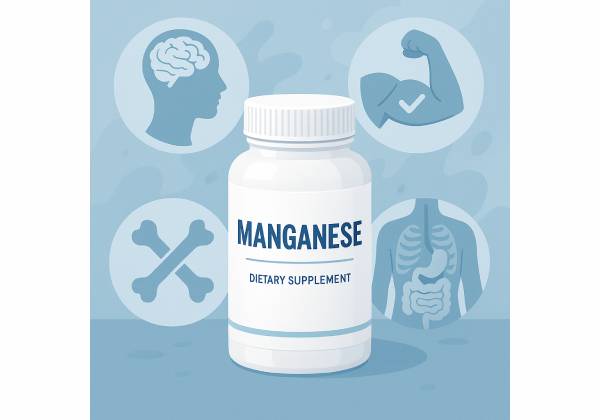
Manganese is an essential trace mineral that the body uses in small amounts but in many places. It activates enzymes that build connective tissue and bones, supports antioxidant defenses through manganese superoxide dismutase, and helps convert food into energy. Most people meet their needs through foods such as whole grains, nuts, legumes, tea, and leafy vegetables. Deficiency is uncommon in healthy adults, yet low intakes can occur with highly refined diets or restrictive eating patterns. At the same time, excess exposure—especially from contaminated water or occupational inhalation—can be harmful. Supplements exist in several forms and doses, but they are rarely necessary for the general population. Because requirements differ by age and life stage and because manganese interacts with some medications, smart use comes down to knowing when a supplement is warranted, how much is appropriate, and how to minimize risks. This guide gives you clear, evidence-informed answers so you can decide whether food alone is best or a low-dose supplement makes sense.
Essential Insights
- Supports bone formation and cellular antioxidant activity at intakes near 1.8–2.3 mg/day for most adults.
- Typical supplements supply 1–5 mg elemental manganese; higher doses seldom add benefit.
- Separate manganese from tetracyclines or fluoroquinolones by at least 2–4 hours.
- Stay below regionally recognized upper limits or “safe levels” (commonly 8–11 mg/day total).
- Avoid supplements if you have significant liver disease, a history of manganese overload, or if an infant’s primary formula or water source is high in manganese.
Table of Contents
- What it is and why it matters
- How much manganese per day?
- Best food sources and absorption
- When to consider a supplement
- Risks, side effects, and who should avoid
- What the research says now
What it is and why it matters
Manganese is a trace element present in bones, the liver, the pancreas, the kidneys, and the brain. An average adult stores only about 10–20 mg, yet that modest reserve is constantly at work. Manganese functions as a cofactor for several enzyme families that underlie everyday physiology:
- Antioxidant defense: The mitochondrial enzyme manganese superoxide dismutase (MnSOD) helps neutralize superoxide radicals generated when cells make energy. MnSOD is central to mitochondrial resilience, especially in high-energy tissues like the heart and brain.
- Connective tissue and bone: Enzymes that create proteoglycans and collagen require manganese, supporting cartilage and normal skeletal development.
- Macronutrient metabolism: Manganese-dependent enzymes participate in the handling of amino acids, cholesterol, glucose, and carbohydrates—small roles that add up across many pathways.
- Reproduction and clotting: Manganese contributes to reproductive hormone function and partners with vitamin K–dependent processes in hemostasis.
While frank deficiency is rare in free-living adults, it is possible in settings such as long-term parenteral nutrition without trace element provision, extremely refined diets low in whole plant foods, or malabsorption. Symptoms described in clinical and metabolic studies include poor bone formation, altered cholesterol metabolism, impaired glucose tolerance, skin rash, and reduced growth in children. In contrast, most people obtain manganese from a wide range of plant foods and beverages without giving it much thought.
A crucial nuance is how tightly manganese is regulated. The gut limits absorption when intake is high and enhances absorption when intake is low, while the liver excretes most absorbed manganese through bile. This homeostasis helps keep tissue levels stable in healthy individuals. However, the same defenses can be overwhelmed by unusual exposures, such as high-manganese water or inhalation of manganese-containing dusts, which bypass normal gut controls.
Because both insufficient and excessive exposure can be problematic—albeit for different reasons—the best strategy is to focus first on food sources, then use supplements sparingly and purposefully. The following sections show you how to translate that into practical intake targets, food choices, and safe use.
How much manganese per day?
Most nutrition authorities set Adequate Intake (AI) values—rather than RDAs—because data are limited. For healthy adults, the AI typically falls around 2.3 mg/day for men and 1.8 mg/day for women, with 2.0 mg/day in pregnancy and 2.6 mg/day in lactation. Children’s AIs scale with age (for example, ~1.2 mg/day at 1–3 years and ~1.5 mg/day at 4–8 years). These targets reflect typical intakes observed in healthy populations that do not show deficiency.
Two additional guardrails matter:
- Upper-level guidance: Some regions historically listed a Tolerable Upper Intake Level (UL) near 11 mg/day for adults. More recently, a European assessment concluded that available data could not support a traditional UL, and instead advised a “safe level” of 8 mg/day of total daily manganese intake for adults from all sources. The underlying message is consistent: avoid high-dose chronic exposure.
- Total exposure counts: Your body does not differentiate manganese from food, water, or pills. If drinking water is high in manganese, or if you drink a lot of tea (a rich source), your “background” intake may already be substantial.
Practical guidance
- Aim to meet needs from food first. Many people naturally consume 2–5 mg/day without trying, especially if they eat whole grains, legumes, nuts, and vegetables.
- If you and your clinician decide to use a supplement, choose a low dose. For general top-ups, 0.5–2 mg/day elemental manganese is usually adequate.
- Keep long-term intake—diet plus supplements—comfortably below regional limits (often 8–11 mg/day for adults, depending on jurisdiction). This is especially important if your water supply is known to be high in manganese or if you regularly consume multiple manganese-rich beverages and foods.
- Life stage matters: during pregnancy and lactation, routine supplementation is not typically needed if diet is varied. Children’s products should be age-appropriate and low dose.
- Remember that absorption is low (roughly 1–5%) and increases when stores are low, which helps protect against deficiency in most healthy people.
Finally, dose form does not change the target. Whether a label reads sulfate, gluconate, glycinate, citrate, or another salt, the number that matters is elemental manganese (mg). If a product does not clearly state elemental content, choose one that does.
Best food sources and absorption
Manganese is widely distributed in plant foods, which is why most people meet their needs without supplements.
Reliable food sources
- Whole grains: Oatmeal, brown rice, whole wheat bread, and other minimally processed grains often provide ~0.5–1.1 mg per serving.
- Nuts and seeds: Pecans, hazelnuts, and peanuts range ~0.5–1.6 mg per ounce.
- Legumes: Chickpeas, lentils, and soybeans commonly contribute ~0.5–0.9 mg per half cup cooked.
- Leafy vegetables and others: Spinach and potatoes provide ~0.3–0.8 mg per typical serving.
- Seafood: Some shellfish (mussels, clams, oysters) can be especially rich, in the ~0.9–5.8 mg per 3 ounces range.
- Beverages: Tea can be a meaningful contributor; a cup of black tea may add ~0.5 mg. Coffee contributes smaller but additive amounts.
- Water: Drinking water usually contains small amounts (often 1–100 mcg/L). Local levels vary with geology and treatment.
Factors that influence absorption
- Iron status: The gut uses overlapping transporters for iron and manganese. Low iron stores tend to increase manganese absorption, while high iron reduces it. This is one reason men (who typically have higher iron stores) may absorb a smaller fraction than women.
- Age: Infants and children absorb a greater proportion than adults. That is helpful at normal intakes but becomes important to monitor if water or formula is high in manganese.
- Dietary pattern: Phytates (in bran and some legumes) and certain fibers can bind minerals and lower absorption, though the overall impact at typical intakes is modest given manganese’s ubiquity.
- Dose size and form: The digestive tract appears to downregulate absorption at higher intakes regardless of salt form. Across common supplement salts (sulfate, gluconate, glycinate, citrate, etc.), no consistent advantage has been demonstrated for improving meaningful health outcomes.
How to use food strategically
- Build meals around whole grains, legumes, vegetables, nuts, and seeds to naturally cover manganese along with other beneficial nutrients and fiber.
- If you drink tea, consider it a contributor—but remember that tea also contains compounds that can reduce iron absorption when consumed with iron-rich meals.
- If your local water has known high manganese levels, consider testing or using filtration solutions recommended for your area to manage total exposure.
In short, a varied diet readily meets manganese needs. Supplements are usually reserved for special situations, and timing them well matters more than chasing a particular “high-bioavailability” form.
When to consider a supplement
For most healthy adults with a mixed diet, a dedicated manganese supplement is not necessary. Consider one only when there is a clear reason and a plan to keep total intake within safe bounds.
Situations where a low-dose supplement may be reasonable
- Documented low intake from restricted diets that exclude whole grains, legumes, nuts, and tea over extended periods, especially when combined with other nutrient gaps.
- Parenteral nutrition or other medically supervised feeding where trace elements must be provided in controlled amounts.
- Specific clinical contexts where a clinician recommends manganese as part of a tailored regimen (for example, to correct a demonstrated low status or to balance a multitrace formula).
How to choose and take it
- Dose: For general top-up, 0.5–2 mg/day elemental manganese is typically sufficient. Avoid long-term daily doses above 3–4 mg unless medically indicated and monitored, especially if dietary intake is already robust.
- Form: Common forms include manganese sulfate, gluconate, glycinate, citrate, and others. There is no strong evidence that one form is consistently superior for meaningful outcomes. Choose a reputable product that clearly lists elemental manganese (mg).
- Timing with medications: Manganese (and other multivalent minerals) can bind certain antibiotics in the gut—most notably tetracyclines and fluoroquinolones—and reduce their absorption. To minimize this, separate by at least 2–4 hours (check your antibiotic’s label for exact timing).
- Combining with other minerals: Large doses of iron or calcium taken at the same time may decrease manganese absorption; spacing them apart is sensible when feasible.
- With food or without: Taking manganese with food may improve tolerance and aligns with how your body expects to receive trace minerals.
Common mistakes to avoid
- “More is better” thinking: Moving far above the AI does not translate into extra benefits and can increase risk over time, especially if water or diet is already manganese-rich.
- Ignoring total exposure: Count all sources—diet, water, multivitamins, and standalone products. Add them up against the 8–11 mg/day adult guardrail used by regulators.
- Using supplements to “fix” unrelated issues: Manganese is not a treatment for fatigue, weight loss, or general aches. If you have persistent symptoms, get evaluated rather than escalating trace elements.
- Overlooking infant exposure: Infants absorb a higher fraction of manganese. Focus on age-appropriate formulas and safe water rather than supplementing.
A practical step-by-step plan
- Estimate your baseline: Scan your diet for whole grains, nuts, legumes, and tea. Many people reach 2–5 mg/day without trying.
- Check the label: If you use a multivitamin-mineral, note the elemental manganese content; many multis already include 1–2 mg.
- Decide on add-ons: Only add a standalone manganese if your total intake is consistently low or your clinician advises it.
- Set reminders: If you take interacting medications (tetracyclines or fluoroquinolones), schedule your manganese at a different time.
- Reassess after 8–12 weeks. If your diet has improved or the original reason has resolved, consider discontinuing the supplement.
Used this way, manganese supplements can fill a narrow gap without pushing you toward excess.
Risks, side effects, and who should avoid
Like many trace elements, manganese follows a U-shaped curve: too little is not good, but too much for too long can also cause harm.
Potential side effects at higher exposure
- Neurological effects: Chronic high intake (especially from contaminated water or inhalation in occupational settings) has been linked to neurological changes. Inhaled manganese bypasses gut regulation and can elevate brain levels more readily than ingested manganese.
- Gastrointestinal upset: Nausea or discomfort can occur with larger single doses.
- Interactions with medications: As noted, manganese can reduce absorption of some antibiotics when taken together.
Populations needing extra caution
- People with significant liver disease or cholestasis: The liver clears manganese via bile. Impaired excretion can lead to accumulation even at moderate intakes. Supplementation should be avoided unless prescribed and monitored.
- Infants and young children: They absorb a higher proportion, so water and formula levels deserve more attention. Routine manganese supplementation is not recommended for healthy infants.
- Those on long-term parenteral nutrition: Over- or under-supplementation can occur if trace element formulations are not well balanced. This group should be managed by clinicians.
- Occupational exposure (e.g., welding, mining): Inhalation risks are separate from supplements but add to total body burden; be conservative with dietary supplements.
- Pregnancy and lactation: Needs are modestly higher, but most healthy diets suffice. Aim to meet needs from food, and avoid high-dose supplements unless directed by a clinician.
How to reduce risk
- Know your water: If your area has elevated manganese in drinking water, consider certified filtration or alternative sources. Public health departments typically provide guidance.
- Watch cumulative intake: Multivitamins, fortified foods, and teas all add up. If totals approach regional adult guardrails (~8–11 mg/day), dial back supplements.
- Mind the timing with antibiotics: Separate by 2–4 hours to protect antibiotic efficacy.
- Listen to symptoms: New tremor, coordination changes, or neuropsychiatric symptoms warrant medical evaluation—do not assume a supplement is harmless because it is “just a trace mineral.”
Bottom line: Manganese is essential but not a “more is better” nutrient. Respecting modest daily needs, keeping an eye on water and cumulative intake, and avoiding unnecessary supplements are the keys to safe use.
What the research says now
The scientific picture around manganese is twofold: clear essentiality but limited evidence that supplemental manganese improves outcomes in already well-nourished people.
Where evidence is solid
- Essential roles are well characterized. Manganese-dependent enzymes underpin antioxidant defense (MnSOD), connective tissue formation, and macronutrient metabolism.
- Population needs are modest and typically met by diets that include whole grains, legumes, nuts, vegetables, and tea.
- Safety thresholds reflect caution. A historically used adult UL near 11 mg/day and a newer 8 mg/day “safe level” (from a contemporary European review) both signal a preference for conservative intakes and careful management of high-exposure scenarios (e.g., water, inhalation).
What remains uncertain
- Supplement form “advantages”: Despite marketing claims for glycinate, citrate, or picolinate forms, current evidence does not show consistent, clinically meaningful superiority of one salt over another in healthy adults. The body’s regulatory mechanisms and low fractional absorption matter more than the specific salt in typical dose ranges.
- Disease-specific benefits: Trials exploring manganese as part of mixtures (e.g., joint formulas) complicate attribution. Few high-quality randomized trials isolate manganese and demonstrate outcome improvements on their own.
- Biomarkers of status: Blood or plasma manganese levels do not consistently reflect intake and vary widely. This makes both deficiency and excess harder to detect early using simple lab tests.
Useful takeaways for everyday decisions
- If your diet includes a reasonable variety of plant foods, you likely cover your manganese needs without trying.
- Supplements can be reserved for narrow, well-defined cases, taken at low doses, and with awareness of drug interactions.
- Community water quality and occupational exposures are bigger drivers of risk than a typical multivitamin. Prioritize those checks first.
The research direction for manganese is increasingly about exposure management (especially safe water) and refining guidance for sensitive groups, rather than promoting supplementation for broad populations. Until stronger clinical trials suggest otherwise, the most evidence-aligned approach is food first, supplements sparingly, and safety always in view.
References
- Scientific opinion on the tolerable upper intake level for manganese 2023 (Guideline)
- Manganese in drinking-water 2021 (Guideline)
- Manganese – a scoping review for Nordic Nutrition Recommendations 2023 2024 (Systematic Review)
- Multivalent cation drugs increase the odds of inappropriate fluoroquinolone and tetracycline prescribing: A cross-sectional study 2021 (RCT/Observational)
- Manganese – Dietary Reference Intakes for Vitamin A, Vitamin K, Arsenic, Boron, Chromium, Copper, Iodine, Iron, Manganese, Molybdenum, Nickel, Silicon, Vanadium, and Zinc 2001 (Seminal Reference)
Disclaimer
This information is educational and does not replace personalized medical advice, diagnosis, or treatment. Nutrient needs and safety thresholds vary by health status, life stage, medications, and total exposure. Always consult a qualified healthcare professional before starting, stopping, or changing any supplement, especially if you are pregnant or breastfeeding, have liver disease, are caring for an infant, or take prescription medications.
If you found this helpful, consider sharing the article on Facebook, X (formerly Twitter), or your preferred platform, and follow us for future evidence-based guides. Your support helps us continue creating high-quality content.

